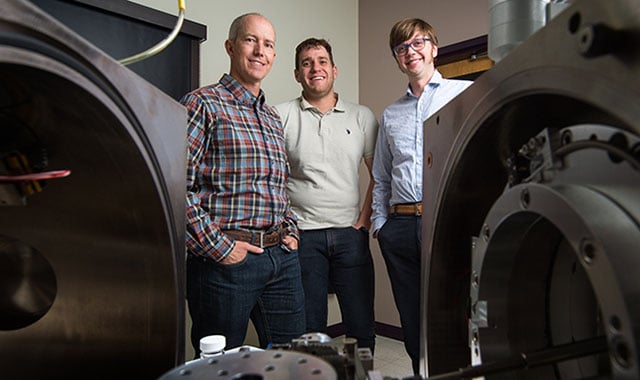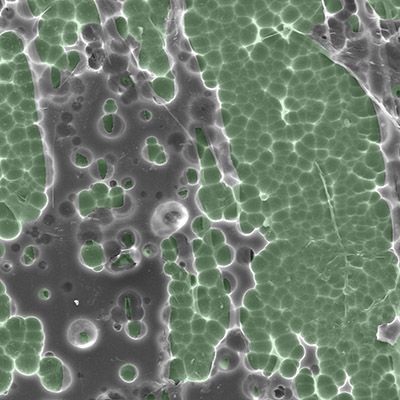Plastic-Degrading Enzyme Helps Us Minimize Our Footprints

We’ve all seen the striking images of the tons of plastic waste that have found their way into the oceans, creating huge man-made islands of garbage. It’s a global environmental problem that poses a serious risk to wildlife, particularly in marine environments, and our consumption of single-use drink bottles is adding to this issue.
But a team of scientists are hoping that their discovery of how to improve an enzyme that “eats” plastic will be huge step forward in developing solutions for this global problem.
Bryon Donohoe and Nic Rorrer and Gregg Beckham (in the photo at the top) are researchers at the National Renewable Energy Laboratory (NREL) and part of a collaboration from NREL, the University of Portsmouth, and the University of South Florida who made a discovery that has generated quite a few headlines in the last week.
Plastic bottles made of polyethylene terephthalate (PET) are a problem because they take centuries to biodegrade. While working to solve the crystal structure of PETase – a recently discovered enzyme that digests PET – the research team inadvertently engineered an enzyme to be even better at degrading the man-made substance.
“We originally set out to determine how this enzyme evolved from breaking down cutin – the waxy substance on the surface of plant – with cutinase, to degrading synthetic PET with PETase,” said Gregg. “We hoped to determine its structure to aid in protein engineering, but we ended up going a step further and accidentally engineered an enzyme with improved performance at breaking down these plastics. What we’ve learned is that PETase is not yet fully optimized to degrade PET—and now that we’ve shown this, it’s time to apply the tools of protein engineering and evolution to continue to improve it.”
The team wrote a paper – Characterization and engineering of a plastic-degrading aromatic polyesterase – that was recently published in the Proceedings of the National Academy of Sciences.
Bryon and Nic tested PETase by taking samples of PET from the soda bottles in Beckham’s office and ran experiments.
“After just 96 hours you can see clearly via electron microscopy that the PETase is degrading PET,” said Bryon. “And this test is using real examples of what is found in the oceans and landfills.”
The team’s goal is to use their findings to continue to improve the new enzymes to break down these man-made plastics, but in a fraction of the time.
For additional information about the project, check out this Popular Science story.
Battelle is one of the companies that manages NREL for the U.S. Department of Energy’s Office of Science. Battelle has a management role in six DOE labs and one for the U.S. Department of Homeland Security.

NREL Electron Microscope Enzyme Interaction
BATTELLE UPDATES
Receive updates from Battelle for an all-access pass to the incredible work of Battelle researchers.